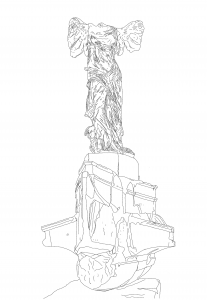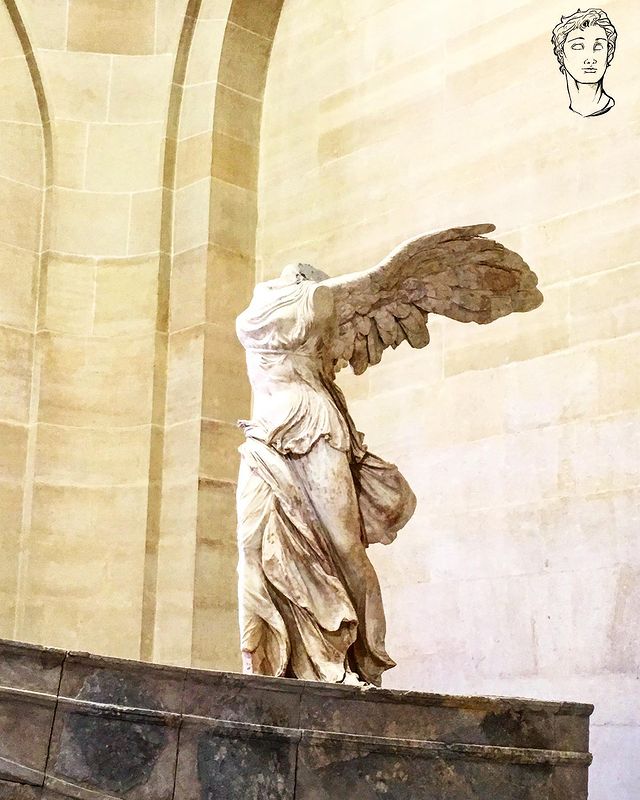Hellenistic sculptures is perhaps the most famous of the sculptures of the Hellenistic period. Now found at the Louvre, it has been speaking to visitor’s imagination for several centuries now. But where does it come from?
The drama of Nike
Where to begin? It has been on prominent display in the Louvre since 1884 and so the statue has received a lot of attention. One of the few Hellenistic statues that survives in its original form as well as a Roman copy, the winged victory is dated to the second century BC. Because there is no agreement over a more specific date, more precise possibilities for its creation range from 295 to 289 or 200 to 180 BC. The creator of the statue is unknown.
 It was discovered in 1863 on the island of Samothrace by Charles Champoiseau, the French Vice-Consul of Turkey. The winged goddess of victory was seen on top of the prow of a ship with strong winds blowing through her clothes. The work had been placed into a niche inside a hill overlooking the theatre of the Sanctuary of the Great Gods. This sanctuary was dedicated to the Cabeiri, gods who were supposed to protect sailors and seafarers and gain victory in war. The creation of the statue of Nike was most likely commissioned to commemorate a naval battle. The type of ship and the base of the statue indicate that it was created by the Rhodians and perhaps suggesting a battle during the second century BC.
It was discovered in 1863 on the island of Samothrace by Charles Champoiseau, the French Vice-Consul of Turkey. The winged goddess of victory was seen on top of the prow of a ship with strong winds blowing through her clothes. The work had been placed into a niche inside a hill overlooking the theatre of the Sanctuary of the Great Gods. This sanctuary was dedicated to the Cabeiri, gods who were supposed to protect sailors and seafarers and gain victory in war. The creation of the statue of Nike was most likely commissioned to commemorate a naval battle. The type of ship and the base of the statue indicate that it was created by the Rhodians and perhaps suggesting a battle during the second century BC.
HEllenistic Sculpture
The Nike of Samothrace is one of the best examples of Hellenistic sculpture (323-31 BC). During this period, art was made for a variety of reasons, appealing to an increasingly diverse audience. A new style of statues moved away from idealized beauty and instead focused on extreme realistic depictions of the every day person and extreme emotions, experimenting even with issues such as disability, gender, drunkenness or old age. Portraits became more naturalistic and statues were also found in theatrical and grandiose compositions such as the Altar of Pergamon.
The winged Nike of Samothrace shows this tendency for drama and extreme composition very well as we can see from the angles of the wings, the placement of the leg and flowing of the clothing. The realism of Hellenistic art is evidenced by the wet clothing hanging from the goddess’ naked body. The drama, intense composition and movement as well as the realistic depiction of the goddess clearly explain why this is such a favourite statue among the visitors of the Louvre.





